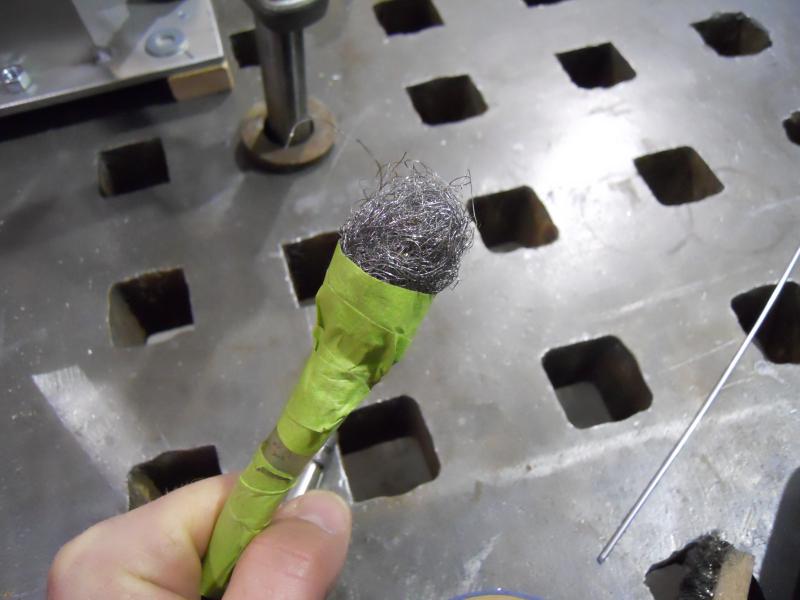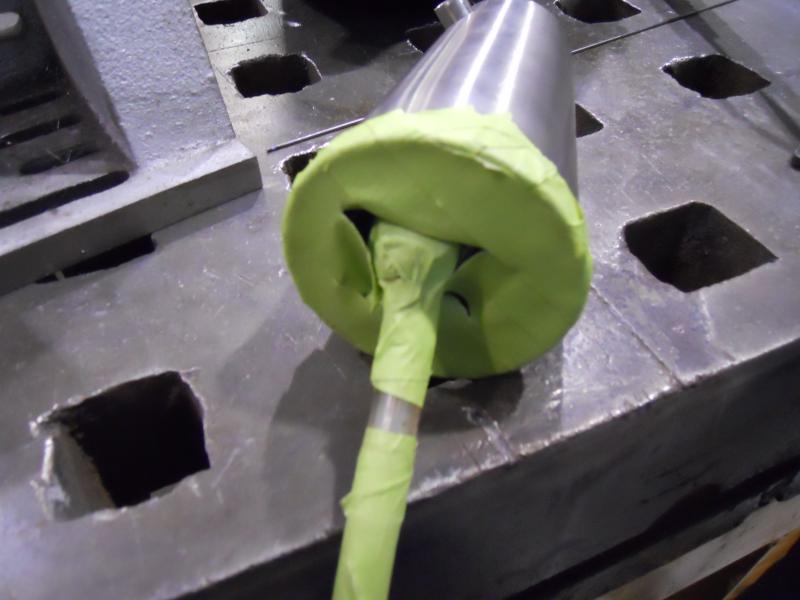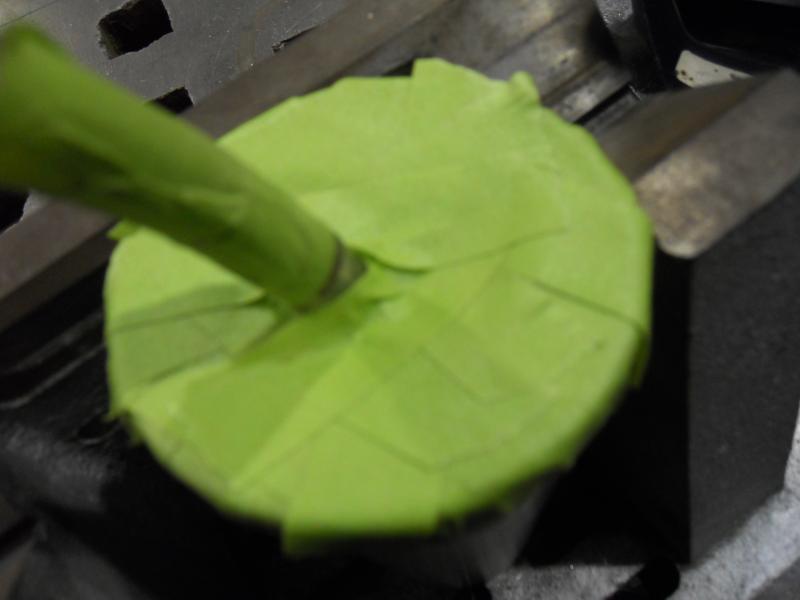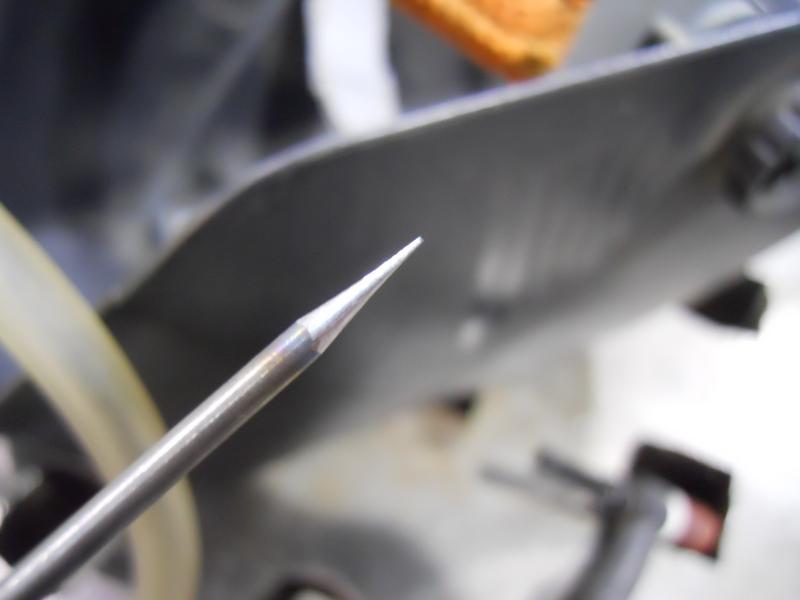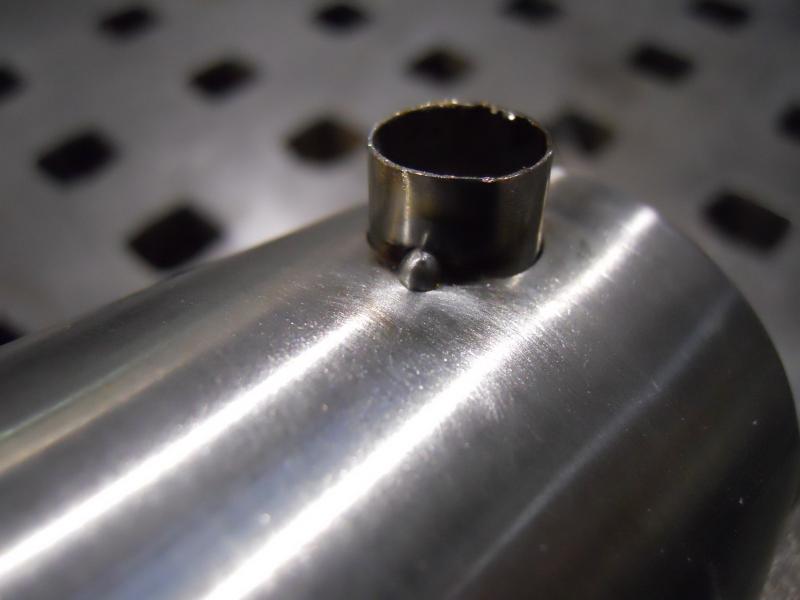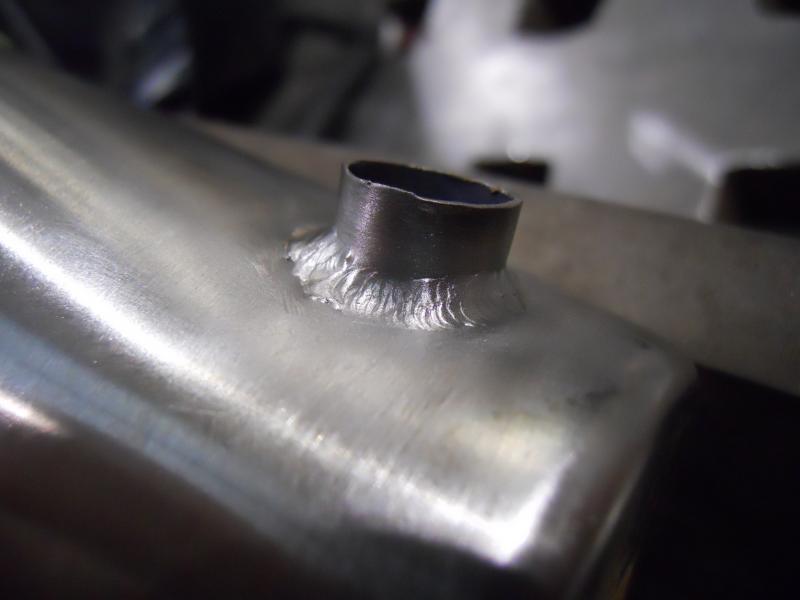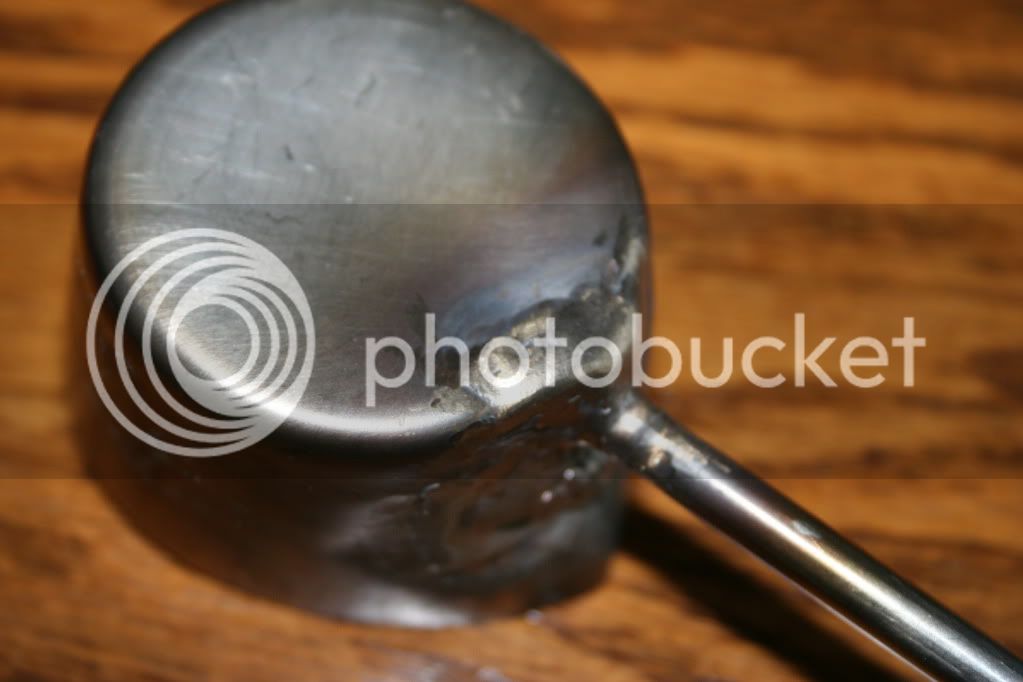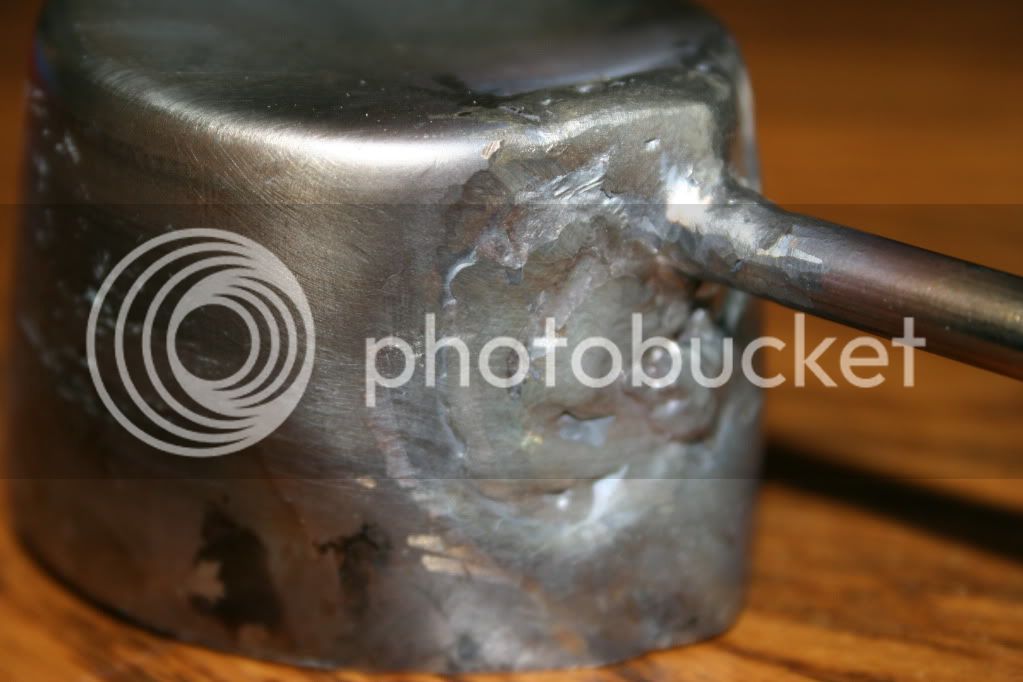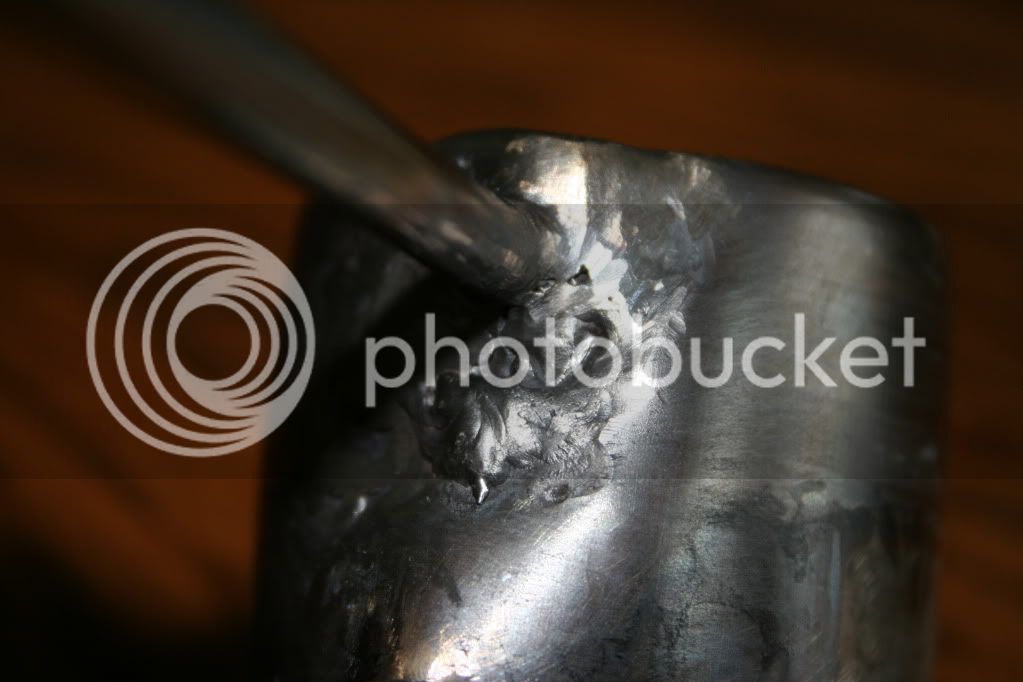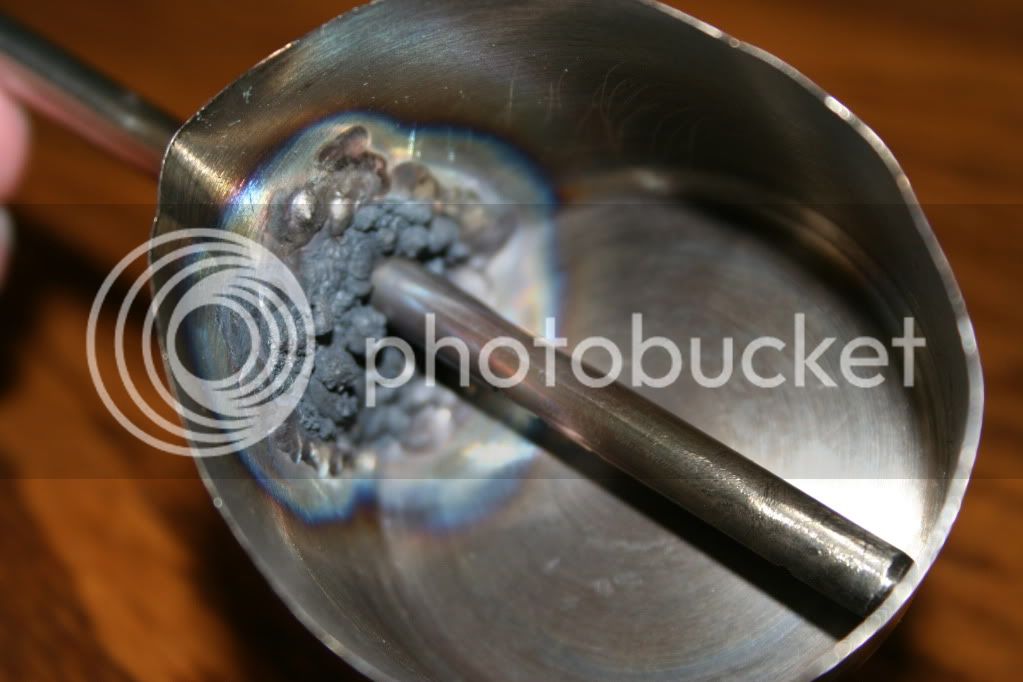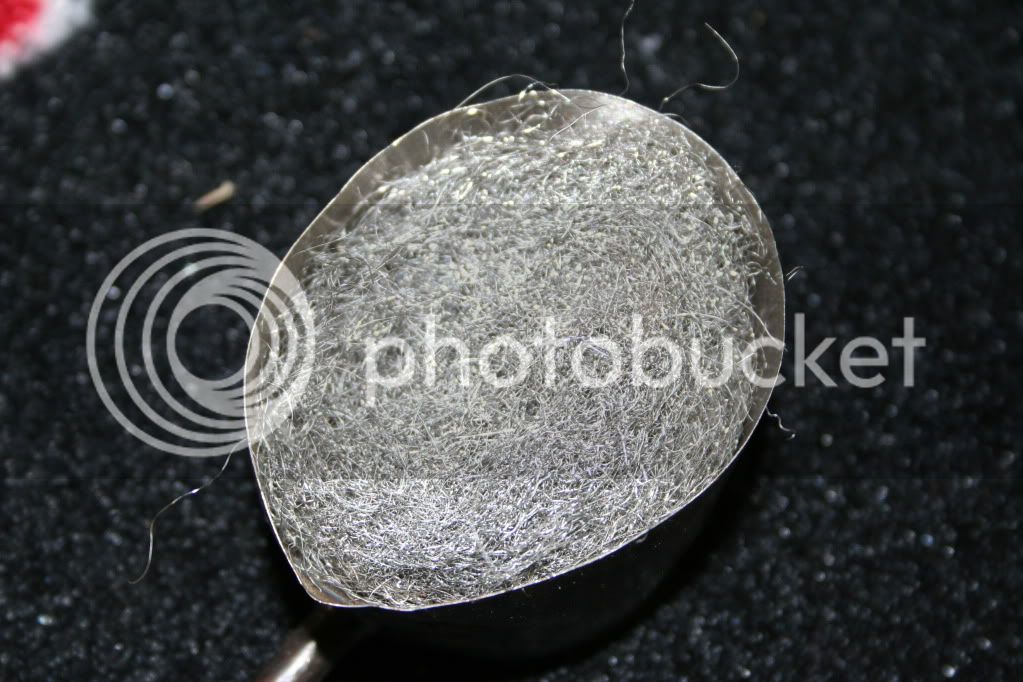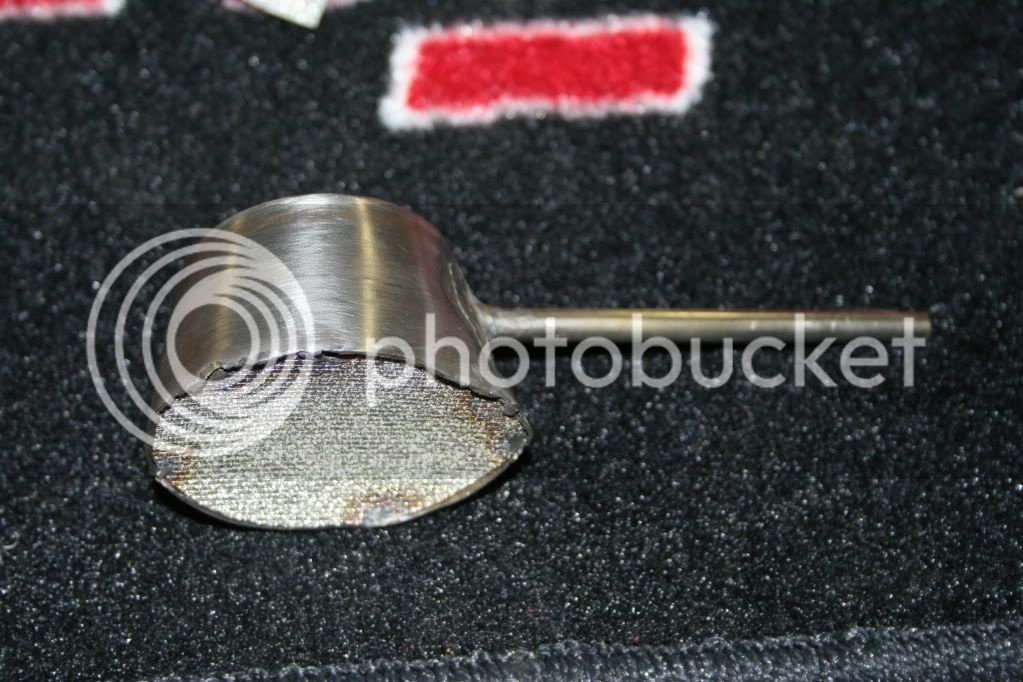- Joined
- Nov 18, 2008
- Messages
- 2,058
- Reaction score
- 25
Don't bother on something .006" that's too thin. .015" is doable if you have everything just right.
On something that thin though you would need to shield the back-side of the weld just as if your were welding in a coupling to a keg.
The oxides will float right through the weld puddle and ruin your work.
When welding thin walled pipe I can tell if I'm getting a good purge just by how the weld puddle behaves. If I'm having trouble it's the shielding on the root side.
The fit would also have to be very tight because on something that thin the instant your arc heats the edge it's gonna burn away.
.015 is pretty thin! I applaud your efforts.
What may help you and I'll try to explain this the best way I know how.
So here it goes...
Tape off the open end of the cup, make a small ball of steel wool and tape it over the end of your purge hose. This will diffuse the argon shielding gas as it fills the inside of the cup. Take a knife and make slit in the tape and push the end of the purge hose with the steel wool on the end through the slit in the tape. Now tape around the gaps in the tape to seal where the hose passes through the taped end of the cup. Now make a small hole in the tape so that the argon can push out the oxygen. Wait a few minutes to purge all the oxygen from the cup.
When it comes time to weld place tip of your filler rod on the joint where your going to make your tack weld. Use the smallest diameter rod you've got.
What your going to do is strike your arc on the filler rod to create a small ball and deposit it where you intend to make your tack weld. Work the pedal very gently start the arc as low as you can and maintain it.
This little ball of filler is going to act somewhat as a heat sink. Once you've made a little ball on the end of your filler rod. Apply just enough foot pedal to severe it from the filler rod. Now concentrate your arc on the ball and gradually increase the heat until it flows into the tubing and your cup. Your going to want to direct your arc more towards the tubing and let the puddle flow to the cup.
Wait for the tack to cool and repeat.
I hope you follow me. I use this technique whenever I'm welding something extremely thin.
Use the smallest diameter Tungsten you've got, ans sharpen it to a sharp point
I hope you invested in the cheater lens cause being able to see exactly what's going on is what's gonna make this possible.
I think I understand everything you said and it makes sense to me. In burning up this project, I kind of tried some of what you said without really knowing what I was doing...
I tried to use the rod to "protect" the thin material. I tried starting the arc on the tube, melting an dropping some filler on the joint then trying to get it to melt in. I was able to do it occasionally, but my consistency wasn't there so often I'd over heat and burn a hole.
I think because the filler I have is so big, the "drops" were too large and it took too much heat to get them to flow into the thin material.
Because this is suppose to be a purge, toward the end of my efforts, I decided to try to use it so I just connected the purge hose to the tube, turned the cup upside down on the table and turned the gas on. It wasn't tight enough to seal against the table so there should not have been any pressure build up. I didn't really give it much time to purge before I started welding and I don't know how much gas is needed, so I just took a stab.
I did get a cheater lens and gotta say, it is fantastic.
Thanks for the response, it really helps.
Ed


